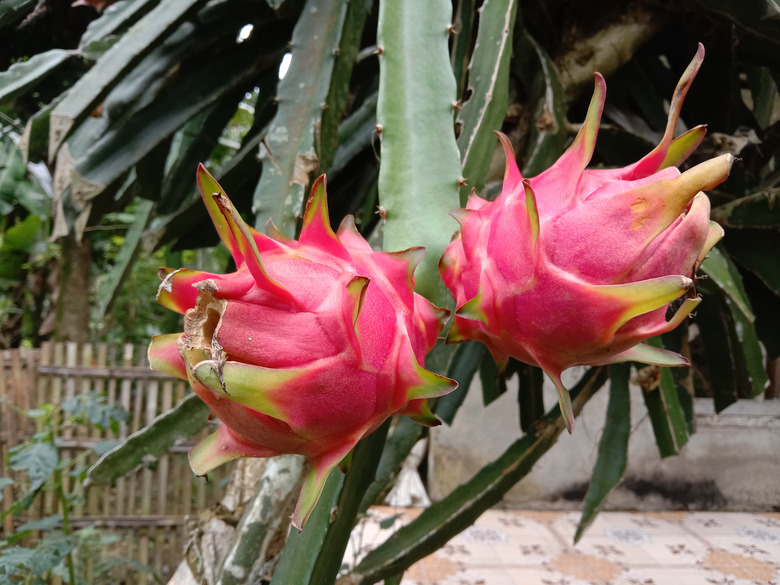How To Induce Flowering In Dragon Fruit
We may receive a commission on purchases made from links.
If you're growing dragon fruit, you may think it has never bloomed since it blooms at night and very briefly. Dragon fruit (Hylocereus undatus, USDA plant hardiness zones 10 to 12) is known around the world under many names, most commonly the pitahaya or pitaya plant, but also strawberry pear, night-blooming cereus, queen of the night, and Honolulu queen. Dragon fruit is what is called a long-day plant, meaning that it blooms when the days are longest.
Wondering how to coax your dragon fruit to flower? Here's what to know.
About the Dragon Fruit Plant
About the Dragon Fruit Plant
The dragon fruit is a fast-growing perennial, vinelike cactus. It produces triangular-shaped stalks that can reach nearly 23 feet long. It spreads using its aerial roots, which allow it to climb and support itself. The red fruit is considered sweet and tasty and is about 3 to 5 inches long and covered in scales.
This plant is native to Central and South America, where it thrives in warm, moist conditions. In the United States, dragon fruit is generally grown in Hawaii, California, and Florida.
The Dragon Fruit's Flower
The Dragon Fruit's Flower
The dragon fruit's flower is a shy maiden, blooming only at night when the inflorescence elongates and opens to reveal its bloom.
But when you do see one ... wow! Dragon fruit flowers are bell-shaped and can reach an enormous 14 inches long and 9 inches wide with a knock-you-out fragrance. The blooms are a greenish-yellow on the outside, often pink-tinged on their pointy ends, which encase creamy white petals on the inside. Because they are only open at night, they depend on bats or moths for pollination. After pollination, they close and wither.
Persuading a Dragon Fruit to Flower
Persuading a Dragon Fruit to Flower
A well-pruned dragon fruit vine is a happy vine. Not only does pruning prevent a dense mass of foliage and stems that can be a nice habitat for insects and disease, but it also induces stem branching and flowering. To prune, wait until you harvest any fruits and then remove all pruned stems from the area.
A key to dragon fruit flowering is to understand its place as a long-day plant. Long-day plants require at least 12 hours of sun to flower. Depending on your locale, this may be a very short window. You can induce flowering by trying to increase light, which is most easily done if you can move your plants into a controlled location, like a greenhouse, and use grow lights for a few weeks.
Using grow lights is a common practice in the nursery industry but may not be practical for you at home. Instead, consider investing in the types of lights used by professional photographers, setting these up outdoors and shining them on your plants for a few hours after the sun has gone down.
In addition, consider the age of your plant. If your dragon fruit vine is young, don't expect any flowers until it matures, usually many months. Alternatively, if you are growing it from a cutting that came from a mature vine, you might see flowers more quickly.
